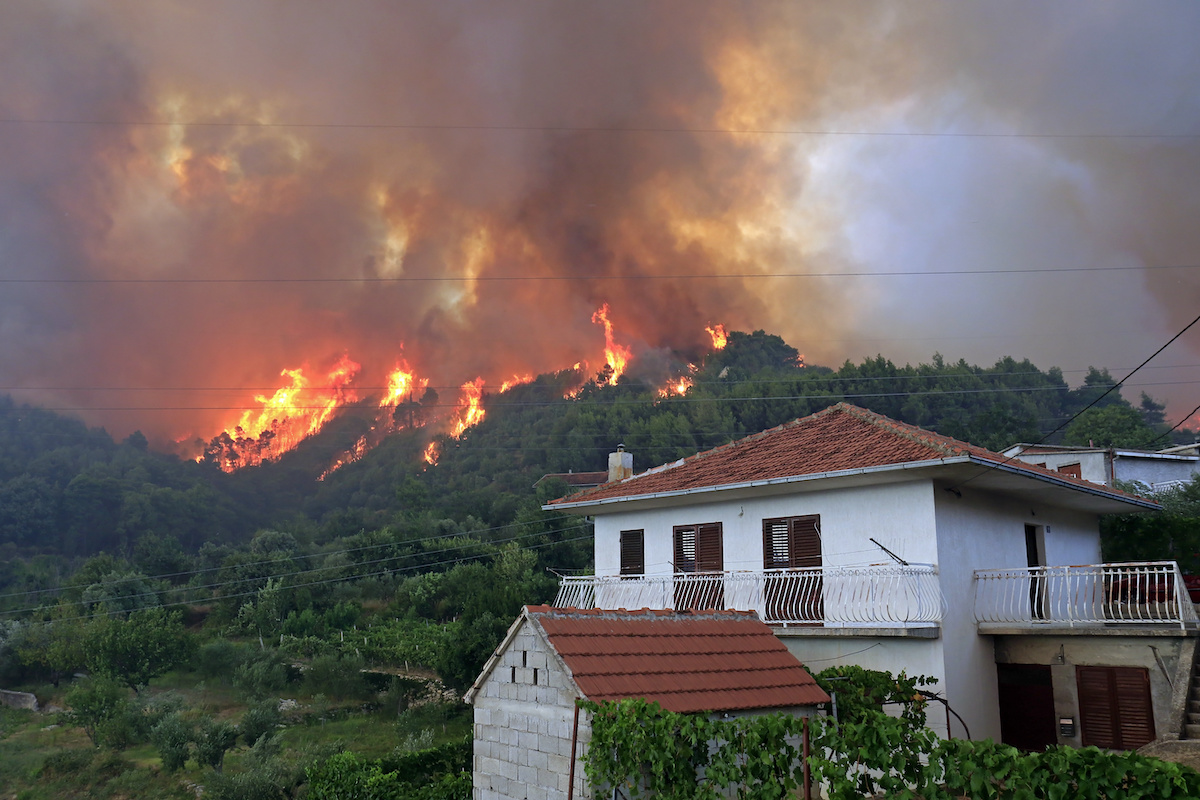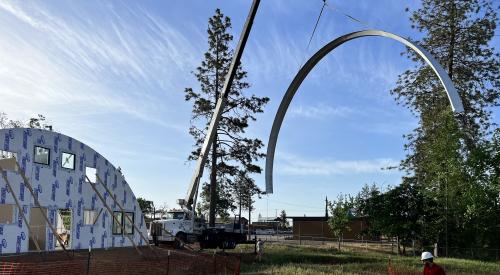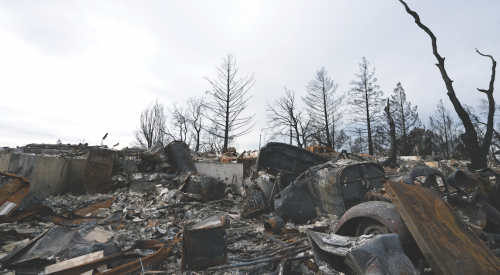As bushes and trees nearby turned to ash, one California resident’s home remained untouched by the Valley Fire of 2015. How? Its composition of steel and concrete. As wildfires progress and become more regular, questions of more durable, fire-resistant home construction are popping up, says TIME. The California resident, Sean Jennings, built his home with RSG 3D panels, which are blocks of foam insulation placed between a steel grid, then covered in concrete. He’s in the process of creating one for his mother in Sonoma County where wildfires destroyed 363,000 acres last year. In a country where 90% of homes built per year are wood-framed, it may be time to evolve.
As the U.S. West approaches the 2021 fire season with even drier conditions than those that kicked off last year’s record-breaking blazes, breaking up with wood makes sense, but the U.S. remains stubbornly attached to timber. It’s one of the few places in the world where wood is the dominant material used in new-home construction—90% of homes built in 2019 were wood-framed, according to the National Association of Home Builders. Even as scientists emphasize the importance of trees in capturing carbon and slowing climate change, the U.S. uses more forest products than any other country, not just for construction but for furniture, flooring and paper. Wood plays a role in American folklore, housing Abe Lincoln and employing Paul Bunyan.
Now there are growing economic reasons to find alternatives. The cost of wood has skyrocketed as more people across the country remodel or build new homes following a pandemic-year construction collapse, causing a lumber shortage that adds more than $35,000 to the cost of a new single-family home.
“Wood is ubiquitous, but it’s time to evolve,” says Matt Watson, the president of Gateway Builders, a Northern California contracting company that has been building homes since 1997. Watson started building with non-wood materials last year and now, as he works with clients who lost homes in the 2020 fires, 19 out of 21 rebuilds are using non-wood materials. His workers have traded in hammers and nails for pneumatic tools that fasten together steel panels. Still, it may take awhile, he says—old habits die hard. “It’s the same as getting people off fossil fuels.”












